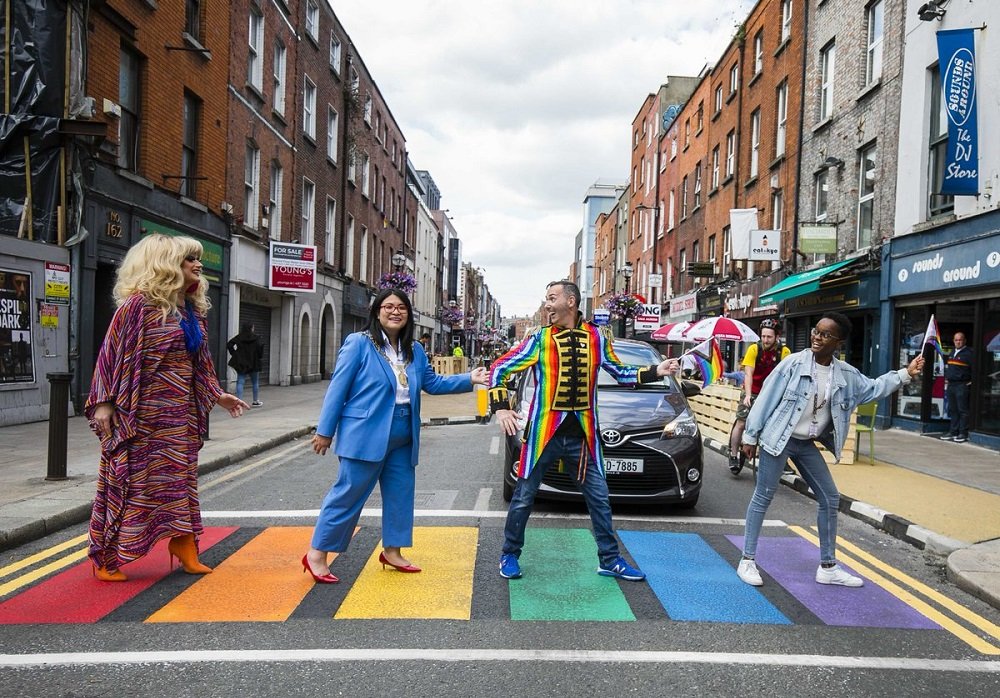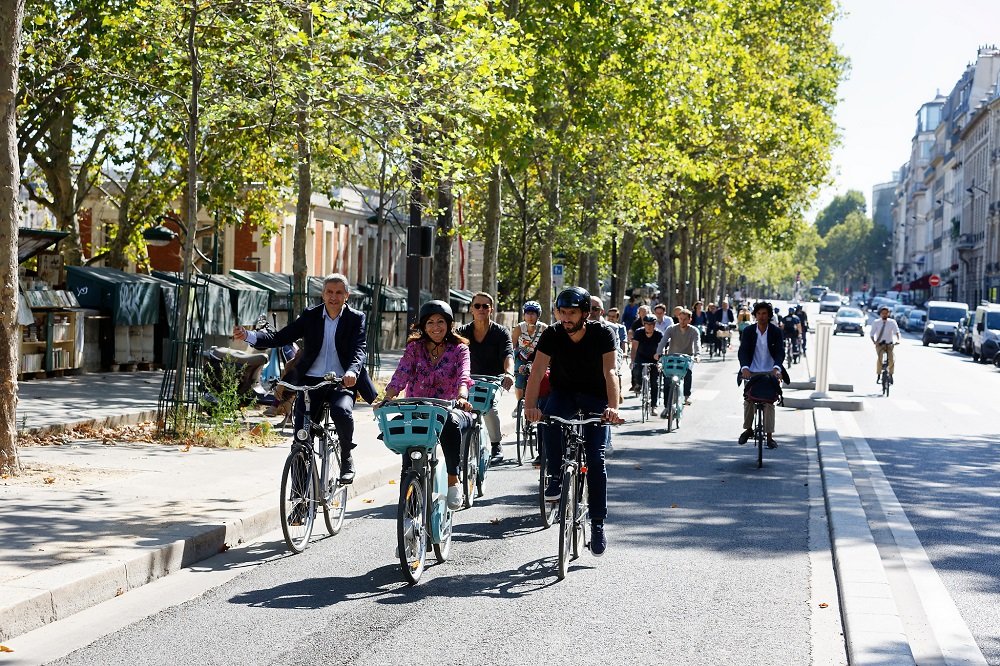Last month, Dublin City Council posted a tweet confirming that the eleven-week trial pedestrianisation of Capel Street and Parliament Street would come to an end on Sunday, 29 August.
The two streets, connected by Gratton Bridge, had been closed to traffic on Friday, Saturday, and Sunday evenings since mid-June as part of an effort to facilitate outdoor dining and a more pedestrian-friendly Dublin city centre.
The tweet, curiously upbeat in tone, highlighted the success of the initiative, suggesting that over 300,000 punters had taken advantage of the traffic-free streets, while simultaneously confirming that it was to be discontinued.
Within minutes, local residents, business owners, media, and elected representatives took to social media to express their anger and exasperation at the news. Panti Bliss, owner of Pantibar on Capel Street, described the move as ‘absolutely enraging’, ‘weird’, and ‘bizarre’.
Fine Gael inner city councillor Ray McAdam argued that the decision was ‘grabbing defeat from the jaws of victory’. Street 66 Bar on Parliament Street expressed its frustration that businesses were not consulted and called upon the Council to share the results of the trial.
How did this extremely popular and progressive initiative land the Council on the back foot?
In May, the Council held a two-week public consultation seeking views on reducing city centre traffic to facilitate pedestrianisation. According to media reports at the time, the consultation received approximately 4,500 submissions and a largely positive reaction to the proposed changes, with 85 percent in favour.
This led the Council to adopt even more bullish measures than initially proposed, including the successful trial pedestrianisation of Capel Street and Parliament Street. But rather than commit to making the trial a permanent fixture, it opted instead only to extend it.
Defining success and misreading the room
The decision had many scratching their heads. If the trial was a success, why not make it permanent? More to the point, what was the Council’s definition of success? This ambiguity was not an isolated issue.
On 18 June, the Council installed a Pride Rainbow Walk outside Pantibar on Capel Street in celebration of Pride Month. On the day of its unveiling, the Council tweeted: ‘If, as expected, the Rainbow Walk is deemed a success, we plan to paint more in other city centre locations next week.’ Cue more social media puzzlement.
The initiative was very well received and soon replicated in other locations around the city, but once again, it was overshadowed by poorly phrased ambiguous messaging from the Council.

The Council has endured a long summer misreading the room. It was repeatedly taken to task for the lack of public toilets in the city centre, and it took two very public kickings for its mishandling of the temporary closure of Portobello Square and its stuttering sales pitch for a white-water rafting facility at George’s Dock.
While the Council may have had clear rationales for these very different operational challenges, the underlying theme is its continued failure to effectively communicate or sell its message. It lost control of the narrative and left others to second guess its decision-making.
Responding to outrage, not dialogue
This lack of communications direction is frustrating because the Council has actually got a lot right this summer.
The pedestrianisation of South Anne Street and Dame Court, the partial banning of cars from Drury Street and South William Street, and improved cycling infrastructure have all proved extremely popular.
However, instead of being recognised for these efforts to create a greener and more pedestrian-friendly city, the Council’s passive, disjointed communications have cast it as an indecisive and opaque body.
Ultimately, in the case of the Capel Street and Parliament Street experiment, the Council, clearly taken aback by the level of public outcry, agreed to extend the trial period until Sunday, 26 September. The accompanying press release included details of a renewed public consultation commencing on Monday, 30 August, which, it suggested, had always been part of the plan.
As Panti Bliss put it, the Council ‘only seems to respond to public outrage, rather than talking to the public or talking to businesses.’

Looking to the future
The last 18 months of Covid restrictions have given many city governments pause for thought: how do we interact with our cities and how we can make them more sustainable and human-friendly? Numerous major cities around the world, including New York, Milan, Barcelona, and Seoul, have capitalised on reduced urban footfall to push through ambitious new measures.
In Paris, for example, over 1,400km of new bike lanes were laid across the city in a very short space of time. Large swathes of the city have been pedestrianised or shut off to traffic completely. In January, the Mayor of Paris, Anne Hidalgo, committed to investing €250 million to turn the Champs-Élysées into a ‘green pedestrianised garden’. Plans are already under way to create new urban forests around the city, putting nature back into urban life.
Of course, many of these changes have met resistance, with taxi drivers, among other groups, staging mass protests. However, the city authorities achieved sufficient political and stakeholder buy-in to push these changes through. They sold their citizens and businesses the vision.
In Dublin, public consultation shows overwhelming support for greater pedestrianisation of the city centre. Yet as the Council embarks on its next phase of consultation, it is incumbent on it to demonstrate meaningful leadership.
This means being able to sell its vision, achieve buy-in, pre-empt any potential resistance, and define ‘success’ for a very diverse group of stakeholders. While the Council is moving in the right direction, setting the public agenda needs to be at the centre of its strategy—not merely a response to public outrage.

About the author
With his intelligent communications skillset and extensive media connections, Paddy helps clients build stand-out messaging and achieve their business objectives, whether they’re a start-up raising seed capital or an established player pushing for industry reform or telling their employer brand story. Paddy has been published in a number of national publications, including the Business Post, Irish Independent, Fora.ie, and The42.ie on the theme of strategic communications and reputation management.
Cover photo credit: RollingNews.ie
